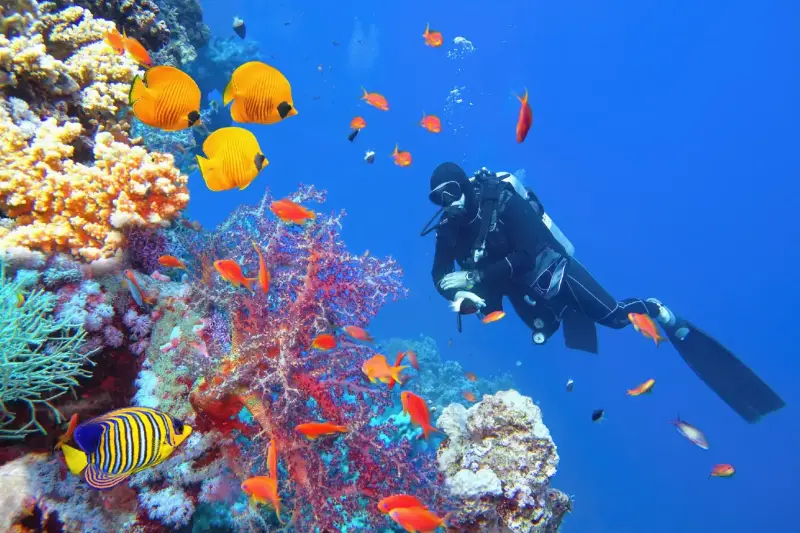The Red Sea: Nature’s Underwater Wonderland

Shimmering beneath the sun at the intersection of Africa and Asia, the Red Sea is much more than a geographic marvel—it’s a living tapestry of colours and life. For those who seek to uncover its secrets, few destinations rival its allure as a global hotspot of marine biodiversity. Divers and scientists alike are drawn by its unique coral reefs, offering a glimpse into an aquatic universe teeming with surprises.
Why Coral Reefs Matter: The Beating Heart of the Red Sea
Coral reefs are often called the “rainforests of the sea”, and in the Red Sea, this analogy is particularly apt. These reefs—stretching for over 2,000 kilometres along arid coastlines—are more than breathtaking visuals. They play a vital role in nurturing and protecting marine species. The warm, salty waters of the Red Sea have helped foster a staggering collection of coral types and marine creatures that aren’t found anywhere else on Earth.
What many people don’t realise is that around 10% of the planet’s coral species call the Red Sea home. These reefs are not just resilient; they’re extraordinary survivors. Unlike reefs elsewhere, those in the Red Sea can brave extreme conditions, such as high salinity and fluctuating temperatures—a testament to their evolutionary marvel.
Hidden Residents: Meet the Red Sea’s Underwater Locals
Slip beneath the surface, and the Red Sea’s true magic comes alive. Here, intricate coral gardens serve as a sanctuary for over 1,200 species of fish—accounting for about 10% of the world’s entire fish population found in coral reefs. Roughly 10% of these species are endemic, existing only in this region.
Some of the dazzling residents include:
- The vibrant angelfish and butterflyfish, dancing amongst coral branches
- The elusive dugong, a gentle marine mammal that may be spotted by the luckiest divers
- Iconic predators like the oceanic whitetip shark, making silent rounds in deeper waters
Among these inhabitants, one can also encounter schools of glinting silver barracuda, or find the peculiar Napoleon wrasse with its curious expression and bright blue-green scales.
An Ancient Laboratory: Why the Red Sea’s Reefs Defy the Odds
What makes the Red Sea especially intriguing is its ability to resist the coral bleaching events devastating other global reefs. Its coral populations have adapted ingenious survival strategies. For centuries, these corals have thrived despite intense heat and salinity. Scientists believe certain genetic traits might make them more resilient to rising sea temperatures—potentially offering hope for future reef conservation worldwide.
This resilience is not just a scientific curiosity; it’s a beacon of hope in a warming world. International research teams often refer to the Red Sea as a “natural laboratory”, studying its reefs for insights on bolstering coral adaptability in less forgiving waters.

Threats on the Horizon: Safeguarding the Treasure
Despite their toughness, Red Sea reefs face mounting threats. Pollution, irresponsible tourism, overfishing, and climate change all loom large. Increased development along coastlines and plastic waste are particularly pressing concerns. Without careful stewardship, this underwater Eden could face irreversible damage.
Here’s what’s being done—and what still needs urgent attention:
-
Marine Protected Areas: Countries like Egypt, Saudi Arabia, and Sudan have established protected zones to regulate fishing and tourism.
-
Citizen Science: Local dive operators are partnering with researchers to monitor reef health and report changes.
-
Sustainable Tourism Initiatives: Efforts to promote eco-friendly diving and educational programmes are on the rise.
But experts warn that long-term success demands greater regional cooperation and stricter enforcement of conservation laws.
In the face of these challenges, the Red Sea stands as both a wonderland and a warning. Will its corals continue to flourish—or fade? For now, its reefs offer a living laboratory and a sanctuary of marvels, beckoning the curious and the concerned alike. As you reflect on the resilience and fragility of this unique ecosystem, one question lingers: what part will you play in its unfolding story?
